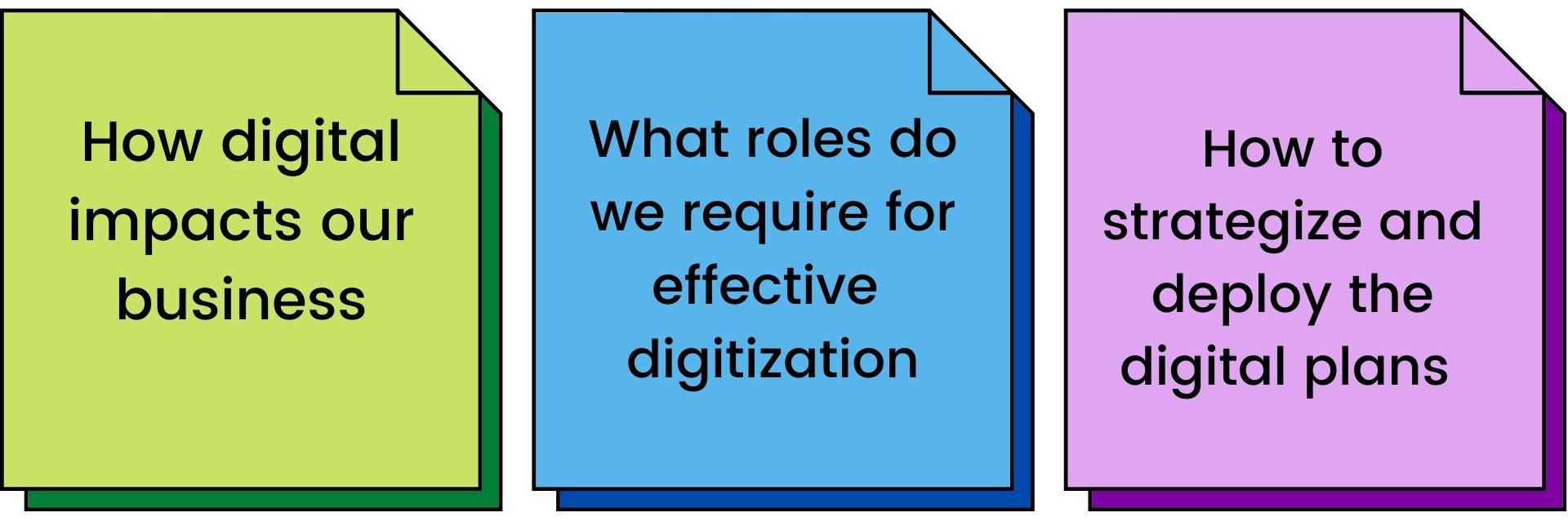We’ve seen technology change a number of things over the last couple of decades. This year, especially, it accelerated as a result of the pandemic.
According to a recent study published by Gartner, 59% of the board directors expect Digital Transformation to significantly transform their industry within the next five years.
While this has been a welcome change to many, the speed at which most had to adapt these changed proved to be quite a struggle. Moreover, digitization at this scale and speed has already expedited the process of skill transformation.
But what does this mean for HR leaders and decision makers?
A number of things! The first being, leaders of all departments and HR need to collaborate and identify skills that would be required for the growth. The second would be to alter hiring and development in accordance to the future needs.
What are The Challenges Hindering Digital Transformation?
Before jumping into this transformation, first ask yourself these questions:
 Answering these questions is what we’d try to help you with in the next few minutes.
Answering these questions is what we’d try to help you with in the next few minutes.
So, here are the three steps you need to take right now for successful digital transformation.
Step 1: Determine How it Would Impact Your Business
First and foremost, the c-suite of your organization needs to be engaged so they can determine how each vertical would be impacted as part of the digitization process.
In the old model, leaders put the idea together, determined the budget, and then the goals. These goals were later passed on to the HR department to find the right skills and roles.
That is not going to work now. Because that essentially means that we’re making faulty talent assumptions. Determining the skills you have and need upfront would help you in identifying how it would impact your business. Product, consumer, profitability, every major aspect would be affected in one way or the other. Some of the questions you’d need answers for are:
- Would you be able to sustain your business using your existing sources?
- Can existing technology be leveraged to deliver new value propositions with minimal investment?
- How would your customers be impacted? Would they have to pay more or less for your services?
- Would you need a capital raise?
Business leaders need to be engaged right from the onset as these directional bets cannot be taken without fully comprehending the consequences and the skills required.
Step 2: Determine Skills that Enable Digitization
As we’ve observed, now is the time of the skill economy. However, it becomes hard to understand which future skills would be needed during and after the digital transformation process.
The first thing to understand here is that these ‘skills’ are not limited to IT anymore as a few still believe. These skills are required by people of a number of domains in one organization. So, what needs to be done is determine what skills, not roles, are required to perform a job.
For instance, some of the skills traditionally required for a sales representative are communication, business acumen, social selling, deck creation and presentation, etc. However, with digitation, more skills have been added to that list. Some of the skills are statistical analysis and understanding infrastructure and security practices. These skills are even required by companies like Facebook, Google, Amazon, and numerous other unicorns.
Step 3: Strategize and Deploy Digitization Plans
Strategizing and deployment require collaboration. You’d have to do test runs, which means changing and breaking the existing practices. This also means business would be disrupted. To ensure effective deployment, you’d need proof of concept and the why ready to communicate to the employees.
As leaders, you also need to ensure that your workforce is comfortable with the cultural shift. Digitization, at its base, affects your workforce the most. They should be willing to accept these changes and should be open to experimentation. Carry out an organization-wide session to explain your employees the need and necessity of this overhaul, and how it will impact each of their responsibilities. The better you communicate the Vision, the quicker they will come on board.
Another thing that could help is following the Build-Measure-Learn methodology. Check whether your hypothesis is working or not, gain actionable items, and scale or discard those plans as you go along. This way, you’d be able to discard practices that are not helping you achieve the goals.
How Can We Help?
iMocha helps organizations assess the skills of the future. As job roles become more and more diverse, it is important to assess the entire gamut of skills needed to perform the role.
We are the world's largest skills assessment API platform that helps organizations hire job-fit candidates, faster. The platform empowers organizations to thoroughly assess employees as well as candidates, essential to identify and benchmark their skills proficiency according to industry/company standards.


